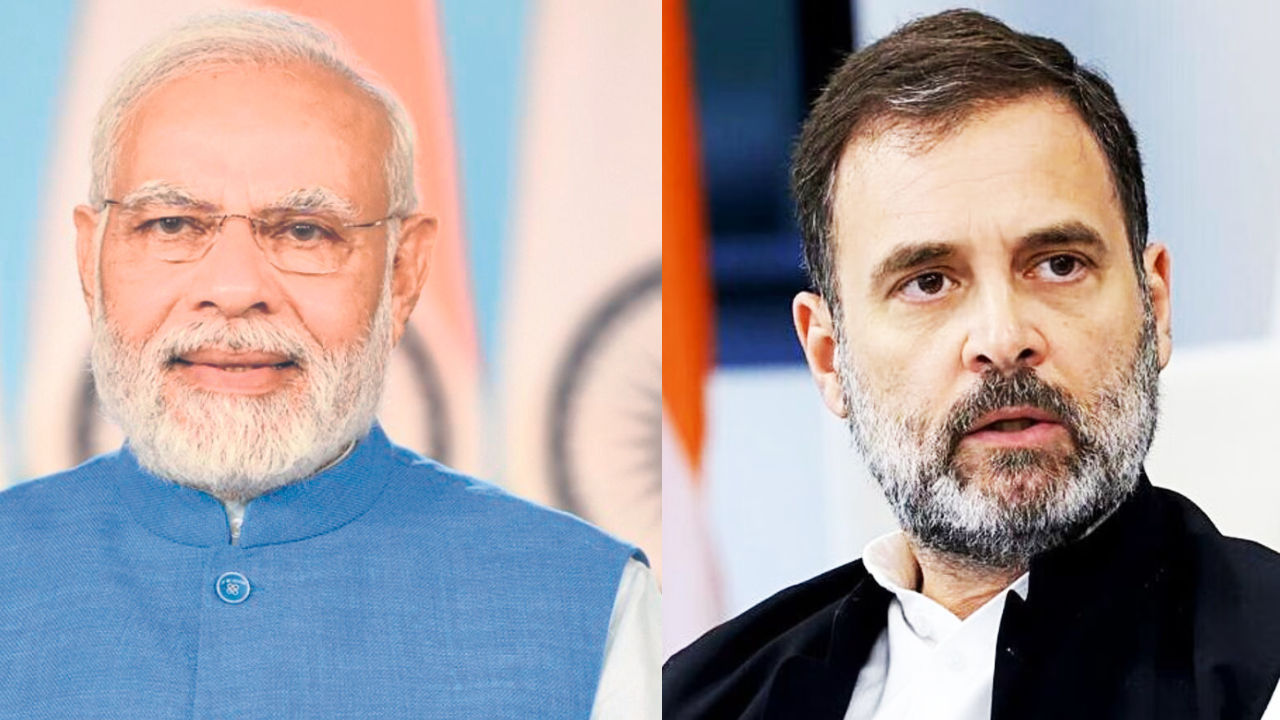By Prashant Shah
The recent visits of Indian leaders Prime Minister Narendra Modi and Opposition Leader Rahul Gandhi to the United States reveal a striking dichotomy in their approaches, themes, and the responses they garnered from the Indian diaspora, political figures, and American business leaders. PM Modi’s visit from September 21 to 23 showcased a dynamic vision of India as a rising global power, one that is actively shaping its international destiny. He emphasized the concept of "Vikshit India" and positioned India as a proactive player on the global stage, cultivating a robust image while engaging with world leaders for peace and prosperity. In stark contrast, Rahul Gandhi’s earlier trip from September 8, characterized by sharp critiques of the current administration, risked undermining India’s global standing.
During Modi’s tour, he participated in key meetings with leaders of the Quad and delivered a compelling address at the United Nations. His rhetoric underscored India’s increasing prominence in global geopolitics, particularly amid heightened tensions in the Indo-Pacific region. Modi spoke of India as a nation that no longer waits for opportunities but actively creates them, appealing to a strong sense of nationalism and economic ambition. His message resonated not only with his supporters but also with those within the Indian diaspora who see India’s potential as a driving force for global growth. The Prime Minister's narrative was one of empowerment, highlighting government initiatives aimed at fostering innovation, technology, and entrepreneurship.
Conversely, Gandhi’s visit focused on concerns surrounding civil liberties, painting a picture of a country grappling with authoritarianism. His engagements in Dallas and Washington aimed to resonate with Indian Americans worried about unemployment, inflation, and the erosion of democratic institutions. While his message struck a chord with some who feel marginalized, it lacked the unifying force necessary to galvanize widespread support among a diaspora largely supportive of Modi’s vision. The challenge for Gandhi was not only to articulate his criticisms but also to present a compelling alternative that would inspire hope and confidence among the Indian community abroad.
The receptions each leader received encapsulated their contrasting narratives. Modi was welcomed with a rockstar-like fervor, drawing over 15,000 attendees who celebrated his achievements and economic initiatives. His charisma and forward-looking agenda invigorated the diaspora, particularly business professionals eager for investment opportunities in India. The atmosphere was electric, underscoring Modi’s ability to connect with a crowd that sees him as a symbol of India’s aspirations on the global stage.
In sharp contrast, Gandhi’s events attracted a modest turnout of around 500. His critical tone towards the government elicited mixed reactions; while some appreciated his focus on democracy and human rights, others found his approach unsettling. The stark difference in attendance and enthusiasm highlighted Gandhi’s struggle to present a cohesive alternative vision, illustrating the challenges he faces in rallying support within a community that has largely embraced Modi's narrative of progress and economic vitality.
The leaders’ engagements with U.S. CEOs further illuminated their strategic priorities. Modi’s carefully orchestrated meetings showcased India’s potential as an investment hub, highlighting government reforms and a favorable business climate. His ability to portray India as a tech-savvy nation with a youthful workforce resonated strongly, securing commitments from major U.S. companies to invest in India. This strategic engagement is part of Modi’s larger goal of positioning India as a cornerstone in global supply chains and technology innovation. By aligning India’s growth story with American business interests, Modi effectively reinforced the notion that a strong India benefits not just its citizens but also its international partners.
In contrast, Gandhi’s discussions with corporate leaders emphasized ethical practices and social responsibility, advocating for accountability amid rising socio-economic disparities. While his message of sustainable growth found some traction among socially conscious business leaders, it lacked the concrete investment proposals that Modi delivered. Gandhi’s vision, while noble, risked being overshadowed by the immediacy of economic opportunities that Modi’s narrative offered. This disparity in focus underscores a broader challenge for the opposition: how to remain relevant and persuasive in a political landscape that is increasingly dominated by visions of growth and progress.
As both leaders navigate their political futures, their U.S. visits serve as a microcosm of the broader challenges and opportunities facing India on the global stage. Modi’s assertive narrative projects confidence, positioning India as a significant player in international affairs. His engagement with global leaders and business executives paints a picture of a nation that is not just catching up but is on the verge of leading in critical areas such as technology and sustainable development. This vision resonates with many, particularly in a world where economic power dynamics are shifting rapidly.
On the other hand, Gandhi’s emphasis on democratic values and civil liberties addresses legitimate concerns about the state of India’s political landscape. Yet, without a unifying message that can inspire a broader constituency, his efforts risk being seen as reactive rather than proactive. The challenge lies in transforming critiques into a compelling vision that addresses both the aspirations and anxieties of the diaspora.
Ultimately, the contrasting narratives they project—one of strength and progress, the other of critique and caution—underscore the pivotal choices ahead for the nation and its leadership. As India stands at a crossroads, the need for a cohesive vision that balances ambition with accountability becomes ever more critical. The dialogue initiated by these visits is vital for shaping the future of India, one that must consider the aspirations of its citizens both at home and abroad. The paths carved by Modi and Gandhi will significantly influence not just their political fortunes, but also the trajectory of India as it seeks to navigate the complexities of a rapidly changing world.











